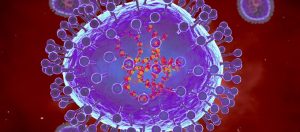COVID-19 vaccines need regular updation to counter the evolution and new emerging variants of the virus that are capable of combating the existing antibodies in the body, scientists said after accessing the course of evolution of novel coronavirus according to a PTI report.
According to a study, published in the journal Virus Evolution, the SARS-CoV-2 is likely to manifest a capability of avoiding immune antibodies over the long term. This quality of the coronavirus is on par with that
of influenza viruses.
Also Read: Pfizer, Moderna jabs effective in pregnant and lactating women: Study
Virologists from Charite, Universitatsmedizin Berlin in Germany, involved in the research closely studied the evolution pattern of the common cold’ coronaviruses. The longest-known of them are 229E and OC43 viruses
They further tracked changes in the spike protein of these coronaviruses, which enable them to
enter host cells, approximately 40 years into the past.
Based on the
analysis, the scientists found one feature which was common to both the
coronaviruses and the influenza virus — all three had a pronounced ladder-like
shape in their evolutionary paths.
Also Read: France says ‘handicapped’ UK ‘blackmailing’ over COVID-19 vaccine supply
“An
asymmetrical tree of this kind likely results from the repeated replacement of
one circulating virus variant by another which carried a fitness
advantage,” explained the study’s first author, Wendy K. Jo.
According to Jo,
this is evidence of ‘antigenic drift’, a continuous process involving changes
to surface structures that enable viruses to evade the human immune response.
“It means
that these endemic coronaviruses also evade the immune system, just like the
influenza virus. However, one also has to look at the speed with which this
evolutionary adaptation happens,” she added.
The scientists said
the novel coronavirus genome is currently estimated to change at a rate of
approximately 10 mutations per 10,000 base molecules per year, meaning the speed at which it evolves is substantially higher than that of the endemic
coronaviruses.
“This rapid genetic
change in SARS-CoV-2 is reflected in the emergence of numerous virus variants
across the globe,” explained study co-author Jan Felix Drexler.
“This,
however, is likely due to the high rates of infection seen during the pandemic.
When infection numbers are so high, a virus is able to evolve more
rapidly,” Drexler added.






